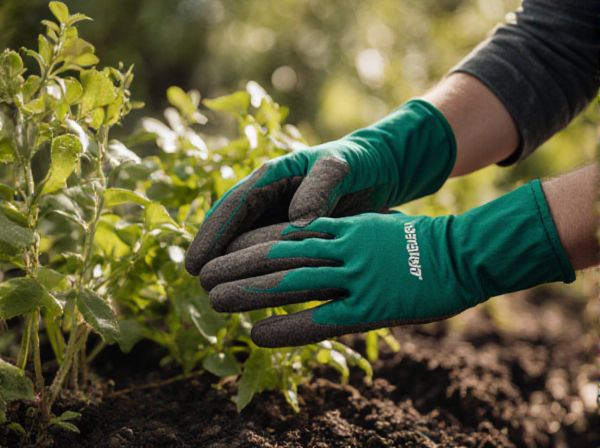
Drift Planting vs Block Planting Illustration
Drift planting creates a natural, flowing appearance by grouping plants in irregular, organic clusters that mimic nature's randomness. Block planting offers a bold, structured look with uniform rows or dense clusters, emphasizing color blocks and patterns. Choosing between drift and block planting depends on the desired visual impact, blending seamlessly with landscape design or creating striking, formal arrangements.
Table of Comparison
| Aspect | Drift Planting | Block Planting |
|---|---|---|
| Definition | Plants arranged in flowing, irregular groups for natural effect. | Plants arranged in dense, uniform blocks for bold visual impact. |
| Visual Impact | Soft, organic appearance enhancing landscape fluidity. | Strong, structured look emphasizing mass and color. |
| Maintenance | Requires moderate care to maintain natural spacing. | Needs intensive upkeep to preserve uniformity. |
| Best Use | Informal gardens, naturalistic landscapes, large areas. | Formal gardens, focal points, smaller defined spaces. |
| Plant Diversity | Supports mixed species for varied texture and height. | Typically uses one species for consistent appearance. |
Understanding Drift Planting in Ornamental Gardens
Drift planting involves grouping multiple plants of the same species in loose, flowing masses to mimic natural growth patterns, enhancing visual harmony and creating a dynamic landscape in ornamental gardens. This technique emphasizes variation in plant height, texture, and color to achieve a more naturalistic and aesthetically pleasing effect compared to block planting's rigid, uniform clusters. Garden designers use drift planting to improve biodiversity, reduce maintenance, and provide seasonal interest throughout the garden.
What Is Block Planting? An Overview
Block planting is a landscaping technique where a large group of the same plant species is planted closely together in a defined area, creating a solid mass of color or texture. This method enhances visual impact by emphasizing uniformity and density, often used in formal garden designs and ornamental displays. Block planting simplifies maintenance and maximizes seasonal interest by grouping plants with similar growing requirements.
Visual Impact: Drift vs. Block Planting
Drift planting creates a natural, flowing appearance by grouping plants in irregular, sweeping clusters, enhancing movement and visual interest across garden beds. Block planting forms dense, uniform patches of the same species, providing strong color contrasts and defined shapes that produce a bold, structured aesthetic. Choosing between drift and block planting depends on desired garden style--drifts offer an organic, relaxed feel, while blocks emphasize order and formality.
Designing for Movement and Flow: Drift Planting Techniques
Drift planting enhances ornamental garden design by creating naturalistic swaths of repetitive plants that simulate organic movement and flow across the landscape. This technique uses massed groups and graduated transitions to guide the eye fluidly, promoting rhythm and visual continuity. By contrast, block planting forms structured, geometric patterns that emphasize solidity over dynamic motion.
Creating Structure with Block Planting
Block planting creates strong visual structure in ornamental gardens by grouping a single plant species in dense, uniform patches. This technique enhances color intensity and simplifies maintenance, making it ideal for defining garden zones with clear, cohesive patterns. Compared to drift planting, block planting offers a more formal and organized appearance that emphasizes geometry and repetition.
Plant Selection Strategies for Each Planting Style
Drift planting emphasizes selecting plants with varying heights, colors, and bloom times to create a natural, flowing appearance that mimics wild landscapes. Block planting requires choosing uniform species with consistent growth habits and foliage textures to maintain a structured, cohesive look. Both strategies prioritize plant adaptability to soil and climate conditions for long-term ornamental success.
Maintenance Considerations: Drift vs. Block Planting
Drift planting requires less frequent maintenance due to its naturalistic layout, allowing plants to self-sustain and reduce weed growth. Block planting demands more intensive care, including regular pruning, deadheading, and soil management to maintain uniformity and prevent overcrowding. Understanding these maintenance differences is crucial for optimizing labor and promoting plant health in ornamental landscapes.
Wildlife and Biodiversity Benefits
Drift planting creates naturalistic meadows that enhance habitat diversity and support a wide range of pollinators, birds, and beneficial insects by mimicking native plant dispersal patterns. Block planting, with its dense, uniform clusters, provides shelter and nesting opportunities for small wildlife while facilitating easier maintenance and monitoring of specific plant species. Both methods contribute to biodiversity, but drift planting more effectively promotes ecosystem connectivity and resilience in ornamental landscapes.
Best Situations for Drift and Block Planting
Drift planting excels in naturalistic landscapes, creating flowing, informal groups that mimic nature by scattering plants to enhance visual interest and ecological benefits. Block planting suits formal gardens and urban spaces where uniformity and strong geometric shapes provide structure and clear focal points. Choosing drift planting supports wildlife corridors and seasonal variation, while block planting is ideal for high-impact displays and maintenance efficiency in confined areas.
Choosing the Right Planting Style for Your Ornamental Garden
Drift planting creates a natural, flowing appearance by grouping plants in irregular clusters, mimicking how plants grow in the wild, which enhances biodiversity and visual interest in ornamental gardens. Block planting involves arranging plants in neat, uniform sections, providing a structured, formal look ideal for showcasing specific colors or textures. Selecting the right style considers factors like garden size, design goals, and maintenance preferences to achieve aesthetic harmony and plant health.
Drift Planting vs Block Planting Infographic

 gardendif.com
gardendif.com